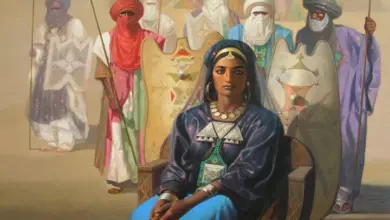المخططات التنموية بالأرياف المغربية: مجهودات كبيرة ونتائج محدودة -حالة سهل الݣـارت بالريف الشرقي-
Development plans in the Moroccan countryside: great efforts and limited results -The case of the Garet Plain in the eastern Rif

اعداد : د محمد بنعلي- الكلية متعددة التخصصات تازة
المركز الديمقراطي العربي : –
- مجلة الدراسات الأفريقية وحوض النيل : العدد الثالث والعشرون كانون الأول – ديسمبر 2023 ,مجلد 06 مجلة دورية علمية محكمة تصدر عن #المركز_الديمقراطي_العربي ألمانيا – برلين .
-
تُعنى المجلة بالدراسات والبحوث والأوراق البحثية عمومًا في مجالات العلوم السياسية والعلاقات الدولية وكافة القضايا المتعلقة بالقارة الأفريقية ودول حوض النيل.
Journal of African Studies and the Nile Basin
للأطلاع على البحث “pdf” من خلال الرابط المرفق :-
ملخص :
حظيت الأرياف المغربية باهتمام خاص من طرف الدولة بعد الاستقلال، ذلك ما يمكن استخلاصه من قراءة سريعة لتصاميم التنمية الاقتصادية؛ بدءا بالتصميم الخماسي الأول 1960-1964، وصولا إلى المخطط الخماسي الأخير 1983-1987، حيث أُعطيت الأولوية للفلاحة على حساب باقي القطاعات، وذلك لأهميتها في التنمية الاقتصادية والاجتماعية، بحيث تضم ما يقارب 1,5 مليون فلاح وتساهم بحوالي 13٪ في الناتج الوطني الداخلي الخام، إضافة إلى أنها توفر 40٪ من فرص الشغل (وزارة الفلاحة, والصيد البحري والتنمية القروية والمياه والغابات 2020، ص. 10).
استمر اهتمام المغرب بمجاله الريفي عبر إقراره لعدة برامج تنموية؛ سواء تلك الخاصة بتطوير القطاع الفلاحي: كمخطط المغرب الأخضر (2008-2020) والجيل الأخضر (2020-2030)، أو بتطوير البنيات التحتية القروية: كبرنامج الكهربة القروية (PERG 1995) وبرنامج تزويد العالم القروي بالماء الشروب (PAGER 1994)، وكذا برنامج الطرق القروية…
رغم الإمكانات المهمة التي رصدها المغرب لتنمية أريافه في إطار مخططات وبرامج مختلفة؛ إلا أن النتائج المحققة لم تكن في مستوى التطلعات، الأمر الذي يطرح عدة تساؤلات حول الأسباب الكامنة وراء محدودية النتائج، والسبل الكفيلة لتحقيق تنمية شاملة ومندمجة بالمجالات الريفية. وحتى نجيب على الإشكاليات المطروحة؛ سننطلق من حالة سهل الݣـارت بالريف الشرقي، باعتباره نموذجا لتدخلات الدولة السالفة الذكر، كما أنه يعتبر مثالا لمحدودية هذه التدخلات.
Abstract
The Moroccan countryside received special attention from the state after independence, which can be gleaned from a quick reading of the designs of economic development, starting with the first five-year design 1960-1964, to the last five-year plan 1983-1987, where priority was given to agriculture at the expense of other sectors, due to its importance in economic and social development, as it includes approximately 1.5 million farmers and contributes about 13% to the gross national product, in addition to providing 40% of employment opportunities (Ministry of Agriculture, and Fisheries, Rural Development, Water and Forests 2020, p. 10).
Morocco’s interest in its rural area has continued through the adoption of several development programs, whether those related to the development of the agricultural sector such as the Green Morocco Plan (2008-2020) and the Green Generation (2020-2030), or the development of rural infrastructure such as the Rural Electrification Program (PERG 1995), the Drinking Water Supply Program (PAGER 1994), as well as the Rural Roads Program…
Despite the important potential that Morocco has monitored for the development of its countryside within the framework of various plans and programs, the results achieved have not met expectations, which raises several questions about the reasons behind the limited results, and ways to achieve inclusive and integrated development in rural areas. In order to answer the problems raised, we will start from the case of the Al-Gart plain in the eastern countryside, as a model for the aforementioned state interventions, and it is considered an example of the limitations of these interventions.




